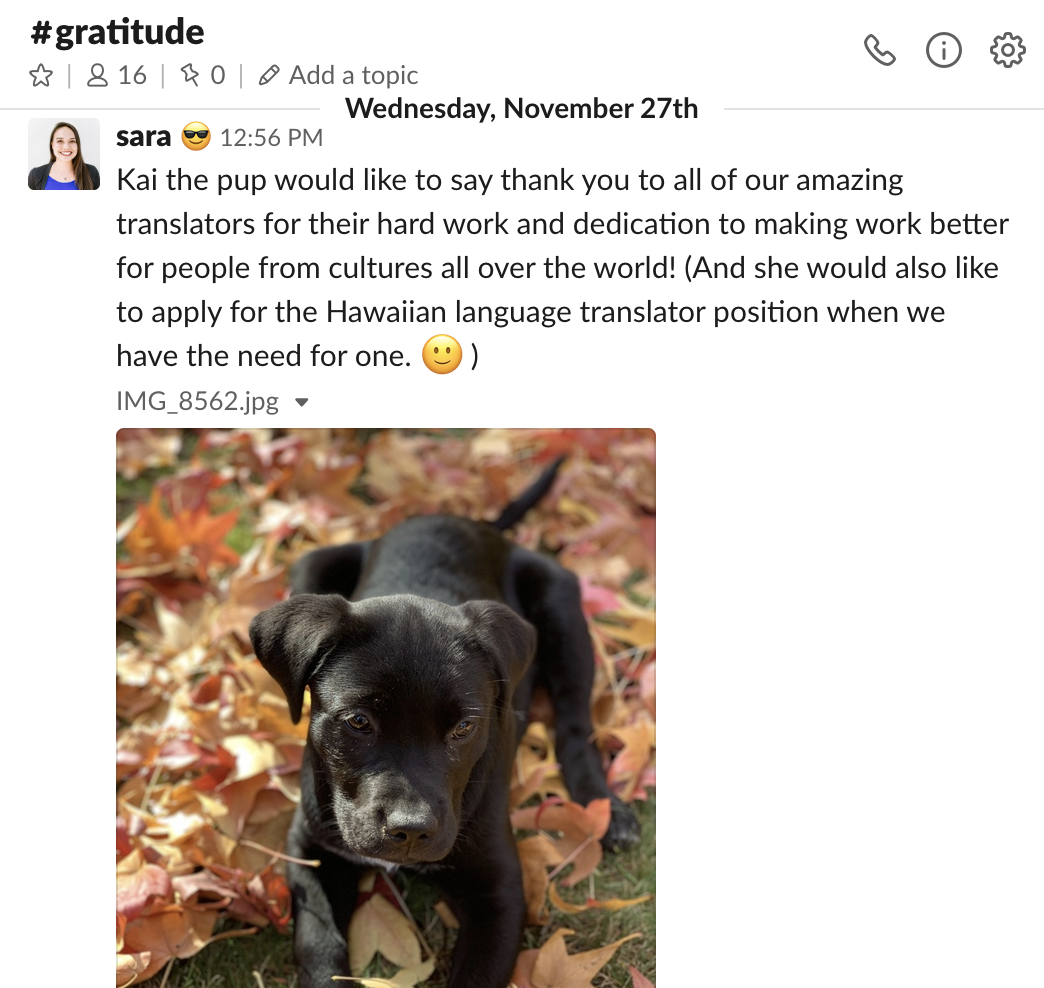
At Humu, our mission is to make work better. And we don’t just mean better here in sunny California – we mean in every corner of the world.
We also know that countries and regions have distinct work cultures, and that to deploy our technology globally, we need the help of locals everywhere.
My background is in linguistics and cross-cultural communication, and as the Localization Manager at Humu, I foster a community of experts and translators around the globe. These translators adapt – or “localize” – Humu’s surveys, user interface, and nudges to make work better in nine languages (and counting!).
Based on my experience and the academic literature on effective teams, here are five ways to supercharge a global team:
1. Be a point of entry.
If you sit at headquarters and manage a team based in multiple continents, it’s up to you to connect your team members to the organization at large. Communicate the culture of your company in your emails and conversations. Got hilarious office jokes? Make a habit of looping everyone in, even if they’re in another timezone.
At Humu, we have a #gratitude channel on Slack, where people from all parts of the org can post selfies to thank translators for their work. These pictures are a small way for translators to connect their efforts to our mission.

Being a point of entry also means going above and beyond to define psychological safety on your team. Without body language to communicate a sense of safety, it’s even more important to welcome critical feedback and establish a pro-social work culture in your messaging. Some examples: ask teammates how they like to receive feedback and respect that preference, and after a team failure, focus on solutions and growth rather than blame.
2. Build virtual public space.
How many of your office conversations are pre-planned, and how many happen spontaneously? When your team is in a dozen countries, you’ll need to work harder to create those bonds that arise organically in an office (and are crucial to building relational trust).
Ask your team what virtual tools they prefer (note: different regions might gravitate towards different communication channels). Make sure you have a communication ecosystem that meets everyone’s needs.
At Humu, we use a Slack channel as a forum for quick questions; a Google Group for updates, shout-outs, and team-wide concerns; monthly video calls for checking in; and a comments feature in our Translation Management System for technical questions. Medium matters!
3. Develop a meaningful relationship with Every. Single. Person.
You’ve already done the hard part—hiring. Now you have a team of talented, smart, empathetic humans who come with unique perspectives. Get to know them! Not only will personal relationships make their work more meaningful (which will make them happier and reduce churn), it will also help you realize their strengths and utilize their skills to the fullest potential.
A simple check-in is an important element of this. Julie, a change and transformation consultant who works on our French translation, likes to keep in touch by telling me the weather in Montreal. (Spoiler: it’s usually cold.) It may seem like small-talk, but Julie says “it can serve as a reminder of other people’s tangible reality” even if our relationship is conducted through phones and laptops.
Being vulnerable is another way to build relationships. I recently shared some critical feedback I received on my written work – it showed my direct reports that I welcome straightforward criticism and also demonstrated that, on my team, we grow by making mistakes.
4. Play matchmaker.
It can be tricky for your team members to find the right person to help them if their coworkers live in a different hemisphere. As a manager, if you are the only person with a 360-degree view of your project, you are in a great position to identify the needs of your teammates and connect them to the people who can help.
When the Taiwanese team started their translation work, I connected them with the mainland Chinese team. Their work doesn’t directly overlap, but I knew the mainland team would have insights (about vocabulary, script, punctuation, etc.) that would benefit their Taiwanese counterparts.
5. Meet up, if you can.
Nothing is a perfect substitute for in-person interaction. If you’re building for the long-term, consider meeting in a physical location. Even a little bit of facetime builds a stronger sense of community. It also gives you a bounded time period to focus on crucial community matters, like writing community guidelines, giving live demos, and offering team members a platform to tell their personal stories.
If meeting up all at once is off the table, make an open door policy for team members to come visit headquarters. When a remote team member is in town, it’s a great opportunity to connect them with other people in the org and show off their accomplishments to the broader team.
Creating a sense of community virtually – and among a group of people spread across the globe – doesn’t come easy. It entails the dual challenges of managing a remote team and managing a multi-cultural team. But with the right tools, this is an opportunity, not an obstacle. After all, diverse teams perform better, and in my opinion, they have more fun, too.




.png)

